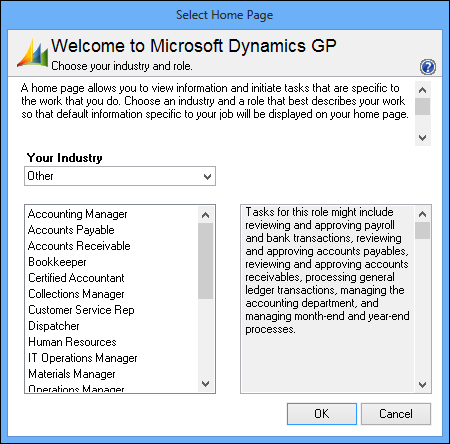Since Version 2010 of Dynamics GP, Microsoft has placed a strong emphasis on a user's role in both the organization and the software. Selecting the right role in the system presents many of the best Home page options by default.
A role is usually selected by default when a user is created and it's often wrong because at setup the focus is placed on job titles, not on tasks the user performs. Additionally, user's roles evolve and change over time. Fortunately, changing a user's role is easy, so we'll look at how to do it in this recipe.
To change a user's Home page role, complete the following steps:
On the Home page, click on the Customize this Page link in the upper-right corner.
Click on the Change Role button in the bottom-right corner.
Changing the role resets any customizations that a user has made to their Quick Links or Business Analyzer settings on the Home page; the user is prompted with a warning that their customizations will be lost and given the choice of cancelling the change of role.
Click on OK to indicate an understanding of the consequences of changing a role.
Select an industry at the top. Changing an industry simply adds or removes available role options below. Selecting Other as the industry provides all of the role options.
On the left side, select the role closest to a user's responsibilities. As a role is highlighted, a description of that role's tasks is included on the right side. Click on OK to accept the role.

The Managing personal reports with My Reports recipe
The Further personalizing the Home page by customizing the layout recipe
The Visualizing information with Business Analyzer on the Home page recipe
The Speeding up navigation lists by disabling Business Analyzer recipe in Chapter 10, Maintaining Dynamics GP



